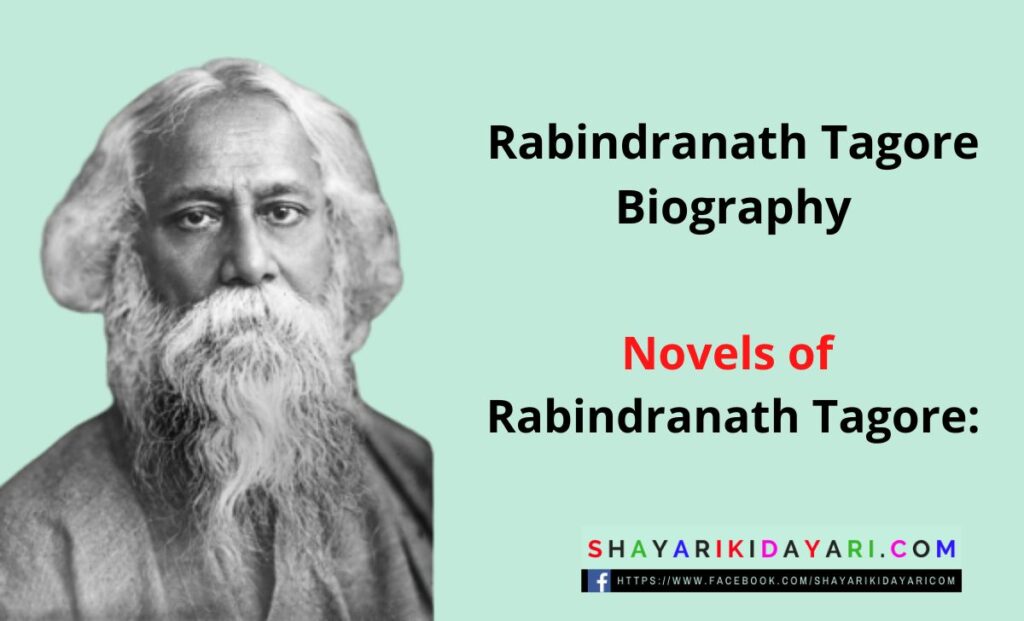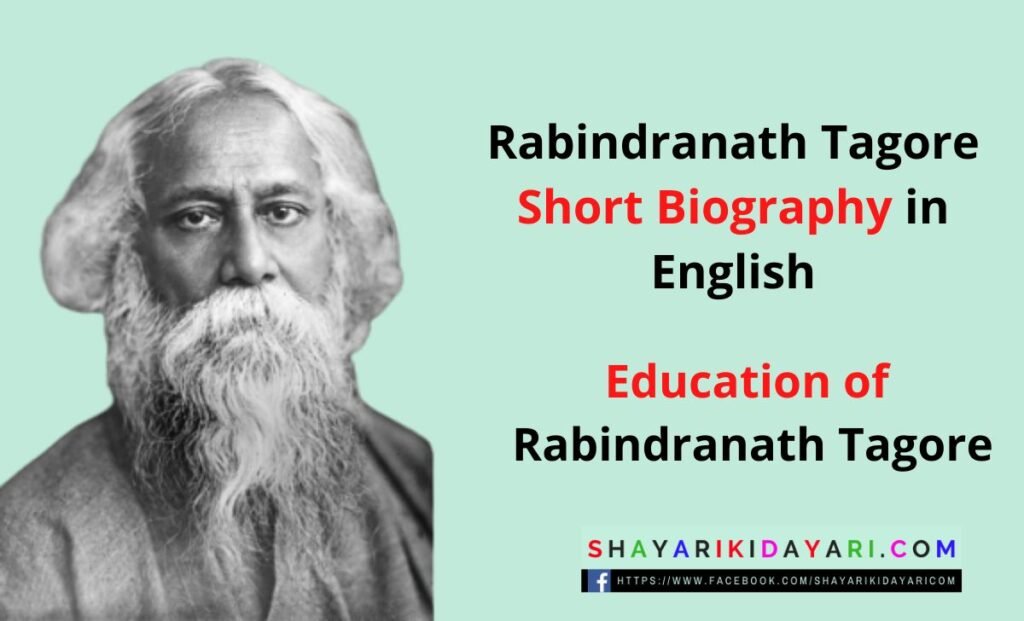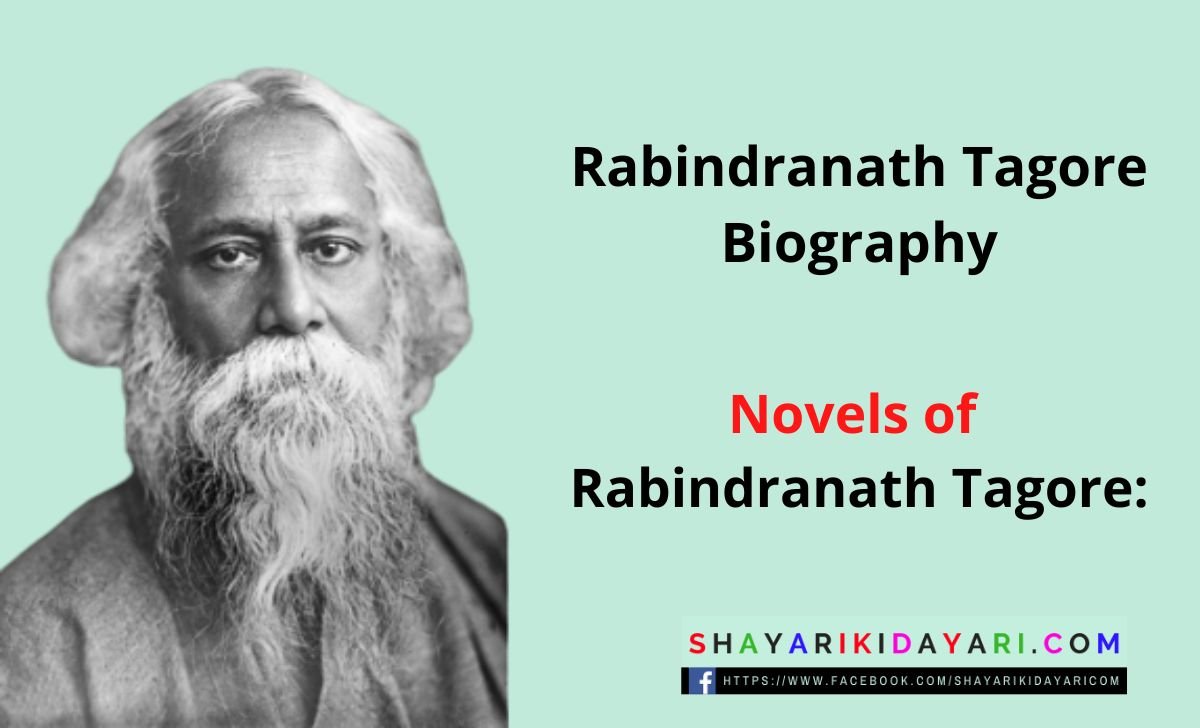Rabindranath Tagore Biography – Rabindranath Tagore Biography in English : If there is anyone who is said to be the greatest in the world of Bengali literature, then it must be Rabindranath Tagore, who is loved by all of us. The first Bengali to win the Nobel Prize, Rabindranath Tagore composed more than 2,000 songs. All the wonderful poems and songs written by him, even today every Bengali is equally heartbroken. Rabindranath Tagore’s works “Gitanjali” and “Jivan Smriti” are still remembered in the minds of Bengalis.
Rabindranath Tagore Biography

Who was Rabindranath Tagore?
Rabindranath Tagore was a Bengali poet, dramatist, storyteller, painter, actor, philosopher, actor, short story writer. Rabindranath Tagore was honored with various names of Kabiguru, World Poet. He won the Nobel Prize in Literature in 1913 for his English translation of Gitanjali. Rabindranath Tagore is the pilgrimage site of all countries, all times and all people.
Rabindranath Tagore Short Biography in English
| Name | Rabindranath Tagore |
| birthday | 7th May 1861, Jorasanko Thakurbari, Kolkata |
| Guardian / Father and Mother | Devendranath Tagore (father)Sardasundari Devi (Mother) |
| Pseudonym | Vanusingh |
| Spouse | Mrinalini Devi |
| Career | Poet, Essayist, Novelist, Playwright, Musician, Storyteller |
| Notable essays | Gitanjali, Rabindra Rachnabali, Gora, Amar Sonar Bangla, Home Away etc |
| Significant awards | Nobel Prize (1913) |
| Death | 22 Shravan 1348 Bangabd / Eng- 7th August, 1941 |
| Place of death | Jorasanko Thakurbari, Kolkata |
Birth of Rabindranath Tagore:
Rabindranath Tagore was born in 1861 AD: 7th May Bengal 1268 25th Baisakh in Jorasanko, Calcutta, in an elite Brahmin (Tagore) family. This Tagore family was the cradle of literature and culture in the 19th century.
Parents of Rabindranath Tagore:
Rabindranath Tagore’s father’s name is Maharshi Devendranath Tagore. Mother’s name Sarada Devi, she was a loving woman. Rabindranath’s grandfather’s name was Prince Dwarkanath Tagore. He was a wealthy landowner and philanthropist. Tagore’s family education – initiation, elegant cultural consciousness and father’s enlightened religious faith were embodied in the poet.
Rabindranath Tagore was the eighth son of his father and mother. When Rabindranath was about 14 years old, his mother Saradadevi died.
Childhood of Rabindranath Tagore:

Like other children, Rabindranath was nurtured by experienced attendants from childhood. His early education began with an elder brother and a few tutors. He also studied in different schools for some time. But because he did not like the strict rules of the school and the weather, he arranged to study at home. At home, all the doors of world science opened before him.
As a child, Rabindranath attended Calcutta’s Oriental Seminary, Normal School, Bengal Academy and St. Xavier’s Collegiate School for a while. But as he was not interested in schooling, he was tutored at home. As a child, Rabindranath felt more comfortable in the natural surroundings at Jorasanko’s house or in the garden houses of Bolpur and Panihati.
Education of Rabindranath Tagore:
Rabindranath’s upanayana took place in 1873 at the age of eleven. He then went on a tour with his father for a few months. First they came to Santiniketan. After spending some time in Amritsar, Punjab, he visited the Sikh system of worship. Finally, Devendranath took his son to Bakrota near Dalhousie Shailshahr in Punjab (present day Himachal Pradesh state of India). Sitting in the Bakrota bungalow here,
Rabindranath started taking regular lessons in Sanskrit grammar, English, astronomy, general science and history from his father. Rabindranath’s poetic talent was revealed from an early age. He started practicing poetry continuously since his youth. At the age of thirteen, his first poem was published in Tattvaedhini magazine.
In 1878 he went abroad (London) for studies. He was sent to London with the intention of becoming a barrister. But after staying there for a short time, he returned to Calcutta with western lifestyle, news of literature and culture and the melody of western music. With the encouragement of his elder brother Jyotirindranath, the tide of music came to the poet’s life. He wrote the excellent ballad ‘Valmiki Pratibha’.
Youth of Rabindranath Tagore:
In 1878 AD, his first book ‘Kavikahine’ was published. Then evening music, morning music, pictures and songs, Kari and Komal, Mansi, Sena’s poems began to be published one by one. Then came out Chitra, Chaitali, Kanika, Kalpana, Katha and Kahini, Naivedya, Kheya, Gitanjali, Gitali etc.
Not only poetry, plays, essays, stories, novels, satires, criticisms, metaphorical dramas, children’s literature, science, sociology, education, music, school curriculum, travelogues, literature and art in almost all fields, the result is the sum of the current excellence of Bengali literature. Achievement and improvement. He also painted about two thousand pictures.
In 1912, the English translation of Gitanjali was published by the India Society of London. Immediately, there was a response in the learned society of the foreign countries. Irish poet W. B. Yes wrote the role of English Gitanjali.
In 1915, the British King conferred the title of ‘Knight’ on Kabiguru. 1919 A.D. He was given that title in protest when unarmed Indians were brutally killed by British soldiers in Jaliwala Bagh. abandoned
Rabindranath traveled to countries like Europe, America, China, Japan, Russia, Malaya, Persia etc. and read many lectures and works in these countries. His works have been published in almost every language of the world. Scholars, poets, writers, intellectuals of all countries of the world respect him as a thinker.
Career of Rabindranath Tagore:
Rabindranath published some important works in Bharti Patrika in 1877, when he was only 16 years old. They were Bhanusingha Tagore’s Padavali, criticism of Meghnadvadha Kavya and two beautiful short stories called Bhikharini and Karuna. Among these, Bhanusingha Tagore’s term is the most popular.
Then in 1878, Rabindranath’s first book of poetry “Kavikahin” was published. Also later he composed another book of poetry called “Sandhyasangeet”. His famous poem “Nirjharer Swapna Bhanga” was included in this book.
Marriage of Rabindranath Tagore:
After hoping to return home from England, Rabindranath finally got married on 9th December 1883 to Bhavatarini, the daughter of a subordinate employee of Thakurbari named Benimadhav Raichoudhury. During the marriage, Bhavatarini was rechristened and changed her name to Mrinalini Devi.
Subsequently, Mrinalini Devi and Rabindranath had a total of five children. Their names were Madhurilata (1886-1918), Rathindranath (1888-1961), Renuka (1891-1903), Meera (1894-1969) and Shamindranath (1896-1907).
But unfortunately among them Renuka and Shamindranath died at a very young age.
Midlife of Rabindranath Tagore:
Rabindranath established a model school in Santiniketan in 1901 AD. Many wise and talented personalities of the country and abroad used to teach here. Today it is known as Visva Bharati University.
Two songs composed by him “Jalakaman Skipper Jai Ha” and ” Amar Saenaar Bangla” are recognized and appreciated as national anthems of India and Bangladesh respectively.
Rabindranath spent a long time in Shilaidah, Kushtia, Bangladesh to manage his zamindari. This Shilaidah is the background for the writing of his Sena Tari’ poetry book and many short stories.
In 1913, Rabindranath won the world’s greatest prize, the Nobel Prize, for his poem Gitanjali . He is the first Indian and the first Asian to receive the Nobel Prize.
Last Life of Rabindranath Tagore:
The last four years of his life were a period of constant physical illness. Twice during this period he was seriously ill and had to be confined to bed. In 1937, Kabir fell unconscious and was in critical condition. Despite recovering from service, he could not recover after falling ill in 1940. Rabindranath’s poems composed during this period were some of the most memorable lines composed around the consciousness of death.
Rabindranath was creative until seven days before his death. After a long illness, Rabindranath Tagore breathed his last in Jorasanko residence in 1941. On August 7, 1941 AD, Rabindranath Tagore, the world poet, Mahamanishi, traveled to Jorasanko, Calcutta. The sun (Rabi) of 25th Baisakh sets in the evening of 22nd Shravana.
Rabindranath Tagore’s World Tour:
Rabindranath Tagore went on a world tour twelve times. Between 1878 and 1932, he traveled to more than thirty countries on five continents.
The books in which Rabindranath recorded his experiences of traveling abroad are: Europe-Expatriates’ Letters (1881), Europe-Traveller’s Diaries (1891, 1893), Japan-Travellers (1919), Yatri (Western-Traveller’s Diary and Java-Traveller’s Letters, 1929), Letters from Russia (1931), In Persia (1936) and Savings of the Way (1939).
Works of Rabindranath Tagore:
Rabindranath Tagore was originally a poet. He started writing poetry at the age of eight. The number of original poetry books published by him is 52. But his popularity in Bengali society is mainly as a composer. Rabindranath wrote about two thousand songs. Apart from poems and songs, he wrote 13 novels, 95 short stories, 36 essays and prose books and 38 plays. The complete works of Rabindranath have been published in 32 volumes called Rabindra Rachanavali. The dance style he introduced is known as “Rabindranritya”.
Establishment of Santiniketan and Visva Bharati:
Maharshi Devendranath Tagore bought a huge plot of land in Santiniketan, Bolpur many years ago. There he established an Ashram in 1888 and a Brahma Mandir in 1891.
Rabindranath wanted to build an educational center on the land bought by his father. So first he established a school called “Pathya Bhavan” there, which was quite different from all the other schools. Because that school was completely open under a tree.
Later, after receiving the Nobel Prize in 1913, he turned the school into a university with the intention of expanding it further. Which he later named “Vishva Bharati” which was founded in 1921.
Again in 1924 he established another educational center which was “Shiksha Satra” for the purpose of teaching the backward people of the society. He started this institute with only 7 students.
Poems of Rabindranath Tagore:
Rabindranath Tagore wrote several poems. Among them Mansi published in 1890 , Sonar Tari (1894), Chitra (1896), Chaitali (1896), Kalpana (1900) and Kshanika (1900) Rabindranath’s romantic thoughts about love and beauty emerged. Also in Palatka (1918) she brought up the contemporary issues of women’s life in the form of story-poems. Her best known poetry in the outside world is Gitanjali . He won the Nobel Prize in Literature for this book.
Short stories of Rabindranath Tagore:
Rabindranath Tagore was a short story writer. Some of his notable stories are “Kankal”, “Nishithe”, “Manihara”, “Khudit Pashan”, “Wife’s Letter”, “Nasthanid”, “Kabuliwala”, “Haimanti”, “Denapaona”, “ The Story of a Muslim” etc.
Several of Rabindranath’s short stories have been made into films, plays and television programs. Some of the notable film adaptations of her story are Tin Kanya and Charulata directed by Satyajit Ray , Guest directed by Tapan Singh , Kabuliwala and Khudhit Pashan directed by Purnendu Pathri etc.
Novels of Rabindranath Tagore:
Rabindranath Tagore wrote a total of thirteen novels. These are: Bau-Thakurani’s Hat (1883), Rajarshi (1887), Eyeballs (1903), Boat Drowning (1906), Prajapati’s Nirbandha (1908), Gora (1910), Ghara Bayre (1916), Chaturanga (1916), Communication (1929), The Last Poem (1929), Two Sisters (1933), Malnch (1934) and Four Chapters (1934). Rabindranath’s first novel attempt was Bau-Thakurani’s Hat O Rajarshi.
Bhau-Thakurani’s Hat and Rajarshi historical novels. In the novel Eksha Bali , various problems in the life of widows are shown in contemporary times.
Several films have been made based on Rabindranath Tagore’s novels. Prominent among these are Satyajit Ray’s Chhara Bairi and Rituparna Ghosh’s Eye Sand.
Drama Literature of Rabindranath Tagore:
Rabindranath Tagore was both a dramatist and a dramatist. At the age of sixteen, Rabindranath played the title role in the play Agraja Jyotirindranath Tagore’s play Sudden Nawab and later in Jyotirindranath ‘s own play Aleekbabu . In 1881 his first ballad Valmiki Pratibha was staged. In this play he played the role of Rishi Valmiki.
Rabindranath Tagore’s Political Philosophy:
Rabindranath Tagore’s political philosophy is very complex. A few poems in Mansi Kavyagrantha , published in 1890, reveal the political and social thoughts of Rabindranath’s early life. In protest against the Jallianwala Bagh massacre in 1919, Rabindranath wrote to Lord Chelmsford in his letter rejecting the knighthood, “My protest is an expression of the silent agony of my terrified countrymen.” Rabindranath’s “Chitta Jetha Bhaisoonya” and “Ekala Chalo Re”It gained wide popularity as a political composition.
The song “Ekla Chalo Re” was a particular favorite of Gandhiji. However, Rabindranath’s relationship with Mahatma Gandhi was sour. Rabindranath also took a special role in resolving the disagreement between Gandhiji and Ambedkar over separate electoral system for Hindu lower castes. As a result, Gandhi also withdrew his hunger strike programme.
Institutions of Rabindranath Tagore:
- Visva Bharati University : Rabindranath Tagore established Visva Bharati University in 1921 . Visva Bharati University is a central university in India. This university is located in Bolpur town of Birbhum district in the state of West Bengal.
- Rabindra Setu: Rabindra Setu (formerly Howrah Bridge) is one of the bridges connecting Kolkata and Howrah on the Hooghly River. The first Howrah Bridge was built in 1874. Later, in 1945, the present outer arm bridge was inaugurated instead of the old bridge. On June 14, 1965, the name of the bridge was changed to Rabindra Setu after Rabindranath Tagore.
- Rabindrasadan: Rabindrasadan (earlier Rabindrasmarani) is a traditional government theater and cultural center named after Rabindranath Tagore located in Kolkata, West Bengal. It is located in the Nandan-Rabindrasdan cultural square in South Kolkata.
- Rabindra Bharati University: Rabindra Bharati University is a public university in Kolkata. This university was established on May 8, 1962. This university is the main educational institution of Jorasanko Tagore family.
Rabindranath Awards and Achievements:
- In 1940 Oxford University awarded him “Doctorate of Literature” in a special ceremony organized at Santiniketan.
- Gitanjali Kavya, written by him abroad, gained special popularity. On that occasion, he was honored with the Nobel Prize in Literature in 1913.
- In 1915 he was knighted by the then British government. But after the Jallianwala Bagh massacre in 1919, he gave up that title.
- A painting by Rabindranath in 1930, exhibited in Paris and London.
- Rabindranath Tagore was the co-founder of Dartington Hall School in Japan.
- On the 7th May 1961, the Indian Department of Posts in honor of; A postage stamp issued with his photograph reveals.
Amazing Facts About Rabindranath Tagore:
- He started writing poetry from the age of eight.
- He despised the traditional education system and did not like to study under that traditional education.
- He started the renaissance movement in Bengal, aiming for a revolution in Indian literature and art.
- Famous film director Satyajit Roy was particularly influenced by Rabindranath’s literary activities. The famous train scene in the movie “Pather Panchali” was actually inspired by an incident described in Kabiguru’s “Chokher Balite”.
- Rabindranath was also a great composer. He composed more than two thousand songs himself.
Death of Rabindranath Tagore:
Rabindranath Tagore suffered from physical ailments in the last few years of his life. The disease did not want to leave him at all. Twice he was so sick that he had to stay in bed for long days.
It is known that in 1937, the poet fell unconscious and fell into a critical condition. Although he had recovered through service at that time, he was unable to recover after falling seriously ill again in 1940.
Finally, after a long illness, he breathed his last on August 7, 1941, at Jorasanko residence. He was about 80 years old at the time of his death.
Rabindranath Tagore Biography in English FAQ
What is the pseudonym of Rabindranath Tagore?
Ans : Vanusingh (Vanusingh).
When was Rabindranath Tagore born?
Ans : Born on 7th May 1861, Jorasanko Thakurbari, Kolkata.
What is the name of Rabindranath Tagore’s father?
Ans : Rabindranath Tagore’s father’s name (father) is Devendranath Tagore.
What is Rabindranath Tagore’s mother’s name?
Ans : Rabindranath Tagore’s mother’s name was Sardasundari Devi.
What is the name of Rabindranath Tagore’s wife?
Ans : Rabindranath Tagore’s wife name (wife) Mrinalini Devi.
When did Rabindranath Tagore get the Nobel Prize?
Ans : Rabindranath Tagore won the Nobel Prize in 1913.
What is the composition of Rabindranath Tagore?
Ans : Rabindranath Tagore’s notable works – Gitanjali, Rabindra Rachnabali, Gora, Amar Sonar Bangla, Ghara Bayre etc.
When did Rabindranath Tagore establish Visva Bharati University?
Ans : In 1921 Rabindranath Tagore founded Visva Bharati University.
Who and when gave the title of ‘Knight’ to poet Rabindranath Tagore?
Ans : In 1915 AD, the British King gave the title of ‘Knight’ to poet Rabindranath Tagore.
Rabindranath won the world’s highest prize Nobel Prize for which poetry?
Ans : Gitanjali.
Rabindranath Tagore Biography in English
Thank you very much for taking the time to read our ” Adi Kavi Rabindranath Tagore Biography – Rabindranath Tagore Biography in English ” post. In this way stay with hindi.shayarikidayari.com website to know any question answer follow this website and make yourself information rich, thanks.

